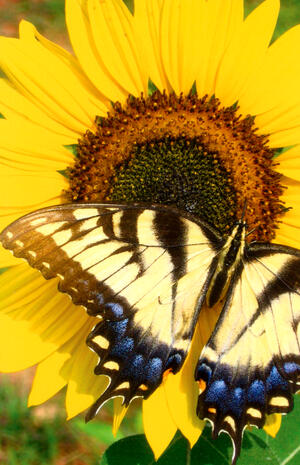Steven Mirsky (USDA-ARS) and Greg Roth (Penn State University) provide a rundown of common establishment methods for cover crops: aerial seeding, interseeding and post-harvest drilling. They also discuss the importance of matching the right cover crop species with the right methods. Sjoerd Duiker (Penn State University) discusses: no-till versus tillage; optimal timing of cash crop establishment, drills versus planters, planter and drill attachments and set up; cover crop termination; and planting green.
Cash Crop Establishment Into/After Cover Crops - Duiker
This session was part of Cover Crops for Soil Health, a three-day professional development workshop hosted by Northeast SARE and Delaware State University in March 2016. All session recordings are available online.
Find more practical information about cover crops in the Cover Crops Topic Room.
Steven Mirsky is a Research Ecologist for the USDA-ARS in the Sustainable Agricultural Systems Laboratory, USDA-ARS-BARC Beltsville, Maryland. He conducts agroecological research in organic and sustainable cropping systems. His research focuses on evaluating cropping system sustainability including agronomic and environmental criteria. Steven conducts research on evaluating the multifunctional role of cover crops (weed control and Nitrogen scavenging and fertility) and their integration into agroecosystems for soil, crop, and weed management. Steven received his M.S. and Ph.D. from Pennsylvania State University.
Greg Roth, Professor of Agronomy and Extension grain crops specialist at Penn State, develops educational programs for extension agents, agribusiness groups and producers on timely issues such as managing crops during drought stress, GMO concerns, potential of specialty corn hybrids, managing for grain quality, organic grain production and producing corn for silage. A key research focus has been managing corn for silage production using different hybrids and management strategies on dairy farms. He is studying the potential of added value wheat and barley varieties to try to create more opportunities for crop producers in the state. During the past four years he has working with a team to develop a machine to interseed cover crops into growing corn and this has been used in over a dozen states so far.
Sjoerd Duiker is an Associate Professor of Soil Management and Applied Soil Physics. His specialization focuses on the effects of soil management practices on soil physical properties and processes. This includes the effect of no-tillage and tillage on soil physical properties, how soil compaction affects soil and crops, what effect crop rotation plays in maintaining soil quality, and the benefits and challenges of cover crops. The use of a systems approach to no-tillage, soil compaction and crop rotations is a crucial element in all of his work. Research takes place on Penn States research farms as well as in collaboration with farmers and field agronomists in Pennsylvania.
Complete session recordings
- Overview of Cover Crop Developments Nationwide
- Cover Crop Planting Dates and Seeding Rates
- Cover Crop Cocktails
- Establishment Methods for Cover Crops and Cash Crops in Grain Production Systems
- Fitting Cover Crops in Vegetable Rotations
- Managing Cover Crops for Ecosystem Services in Vegetable Systems
- Cover Crops: Current and Future Directions
- Evaluating and Improving Cover Crop Performance and Adoption
- Cover Crops as Part of an Overall Nutrient Management System
- Managing Soil Health With Cover Crops: Beyond the Basics
- Cover Crop Field Tour Recap and Debrief
- Farmer Panel on Cover Crops
